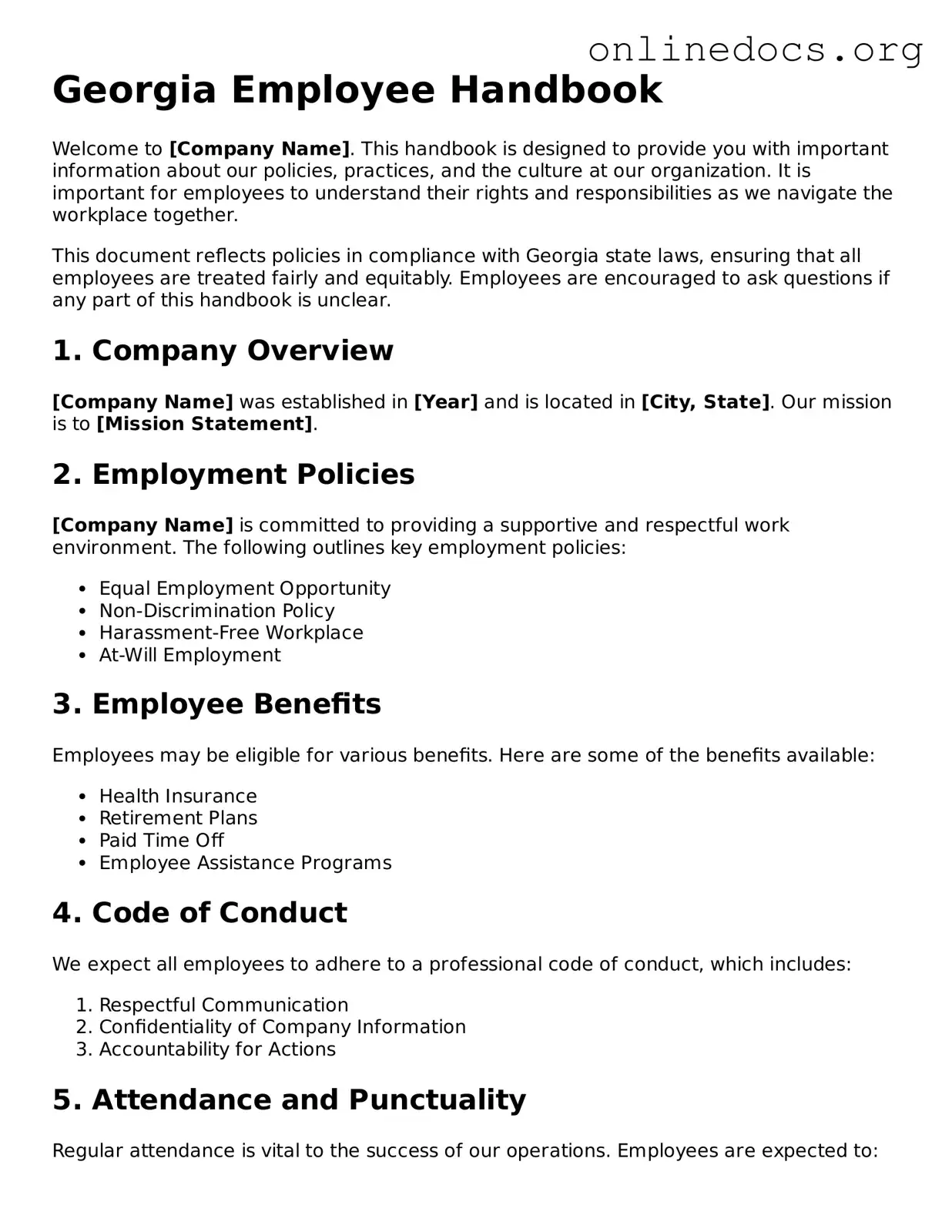The Georgia Employee Handbook is similar to a company policy manual. Both documents serve to outline the rules, expectations, and procedures within an organization. While the employee handbook often focuses on employee rights and responsibilities, the policy manual may delve deeper into specific operational guidelines. Both documents aim to create a cohesive work environment by ensuring that all employees understand the standards and practices that govern their behavior at work.
Another document comparable to the Georgia Employee Handbook is the employee orientation guide. This guide is typically provided to new hires and serves as an introduction to the company culture, policies, and procedures. Like the employee handbook, the orientation guide helps employees acclimate to their new roles by providing essential information. However, the orientation guide is often more focused on the onboarding process, whereas the employee handbook serves as an ongoing reference throughout an employee’s tenure.
The employee contract also shares similarities with the Georgia Employee Handbook. An employee contract outlines the terms of employment, including job responsibilities, compensation, and benefits. While the handbook provides a broader overview of company policies, the employee contract focuses on the individual’s agreement with the employer. Both documents are crucial in setting clear expectations and protecting the rights of both parties.
A code of conduct is another document that aligns closely with the employee handbook. This document explicitly details acceptable behaviors and ethical standards expected from employees. While the employee handbook may touch on these topics, the code of conduct provides a more in-depth examination of specific behaviors that could lead to disciplinary action. Together, they reinforce the importance of maintaining a professional work environment.
Performance appraisal forms are also similar to the Georgia Employee Handbook. These forms are used to evaluate employee performance and provide feedback. While the handbook outlines the overall performance expectations and evaluation processes, the appraisal forms serve as the practical tools for assessing individual contributions. Both documents are essential for fostering employee development and ensuring accountability.
Job descriptions are another document that shares a connection with the employee handbook. Job descriptions provide detailed information about specific roles, including responsibilities, qualifications, and reporting structures. The employee handbook, on the other hand, offers a broader context regarding the company’s policies and culture. Both documents work together to clarify expectations for employees in their respective roles.
When preparing to navigate the process of buying or selling a motorcycle in Arizona, it's important to utilize legal documents that facilitate a smooth transaction. The the document in pdf is essential for indicating the transfer of ownership and can help clarify details between the parties involved, ensuring compliance with state regulations.
Lastly, the training manual is akin to the Georgia Employee Handbook. Training manuals provide detailed instructions and guidelines for specific tasks or processes within the organization. While the employee handbook offers a general overview of company policies and procedures, the training manual focuses on the practical aspects of job performance. Together, they ensure that employees are well-equipped to succeed in their roles.
